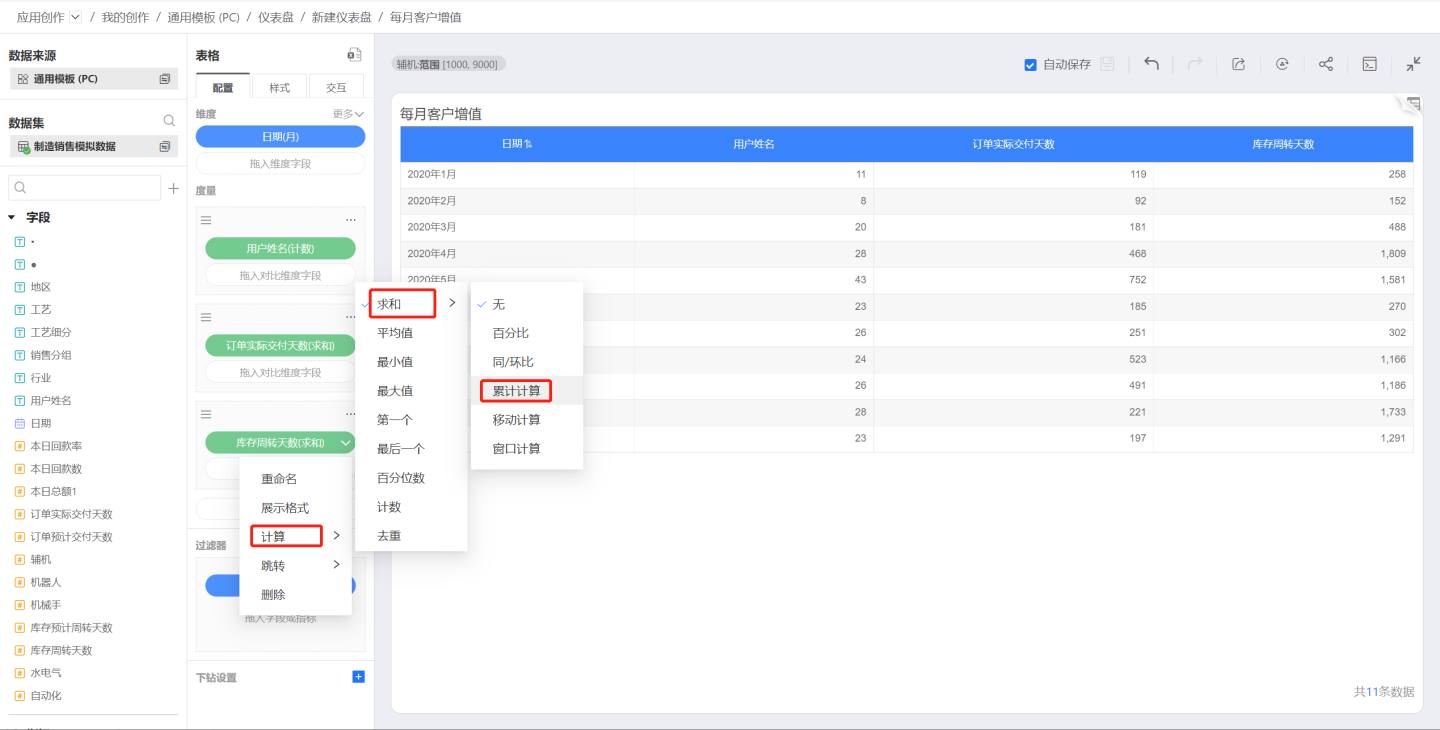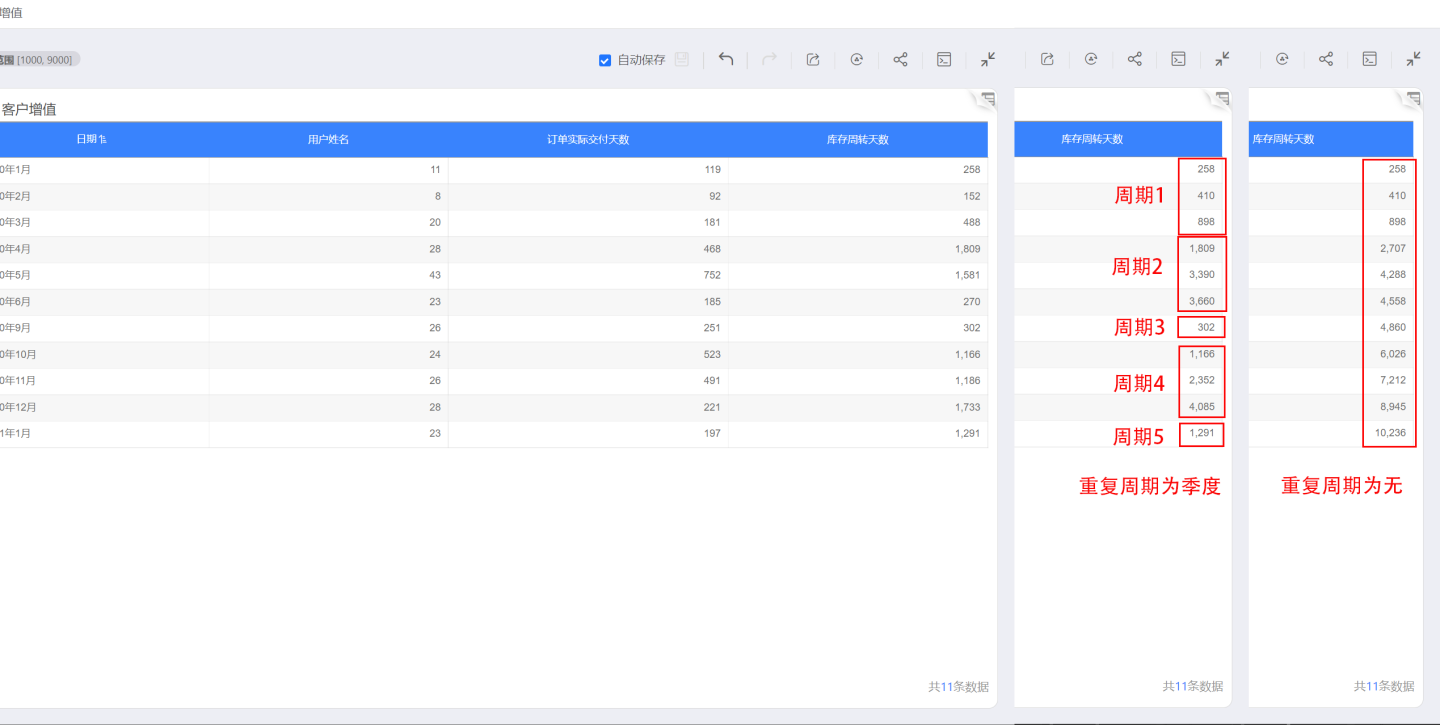Cumulative Calculation
Cumulative calculation involves accumulating measures based on calculation types and repetition cycles. It can only be performed when the date is used as a dimension, and the calculation method for the date dimension must be: milliseconds, seconds, minutes, hours, days, weeks, months, quarters, or years. If the calculation method for the date dimension is: days (across weeks), days (across months), months (across years), or quarters (across years), cumulative calculation cannot be applied to the measures. 
Supported calculation types for cumulative calculation:
- Sum
- Average
- Maximum
- Minimum
 The repetition cycle of cumulative calculation indicates accumulation according to the repetition cycle. The repetition cycle is a larger unit than the currently selected date dimension aggregation method. For example, if "minutes" are selected, the repetition cycle list supports all units larger than "minutes": hours, days, weeks, months, quarters, and years. The repetition cycle can also be selected as "none," indicating accumulation one by one according to the current calculation method. In the example, the date dimension calculation method is monthly, so the cumulative calculation repetition cycle can choose quarters, years, or none. When selecting quarters, it accumulates by quarters; when selecting none, the measure accumulates one by one.
The repetition cycle of cumulative calculation indicates accumulation according to the repetition cycle. The repetition cycle is a larger unit than the currently selected date dimension aggregation method. For example, if "minutes" are selected, the repetition cycle list supports all units larger than "minutes": hours, days, weeks, months, quarters, and years. The repetition cycle can also be selected as "none," indicating accumulation one by one according to the current calculation method. In the example, the date dimension calculation method is monthly, so the cumulative calculation repetition cycle can choose quarters, years, or none. When selecting quarters, it accumulates by quarters; when selecting none, the measure accumulates one by one.
